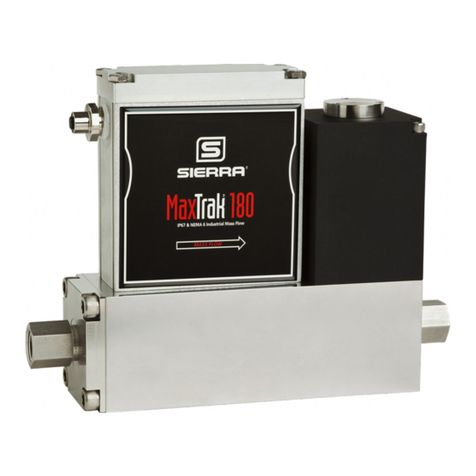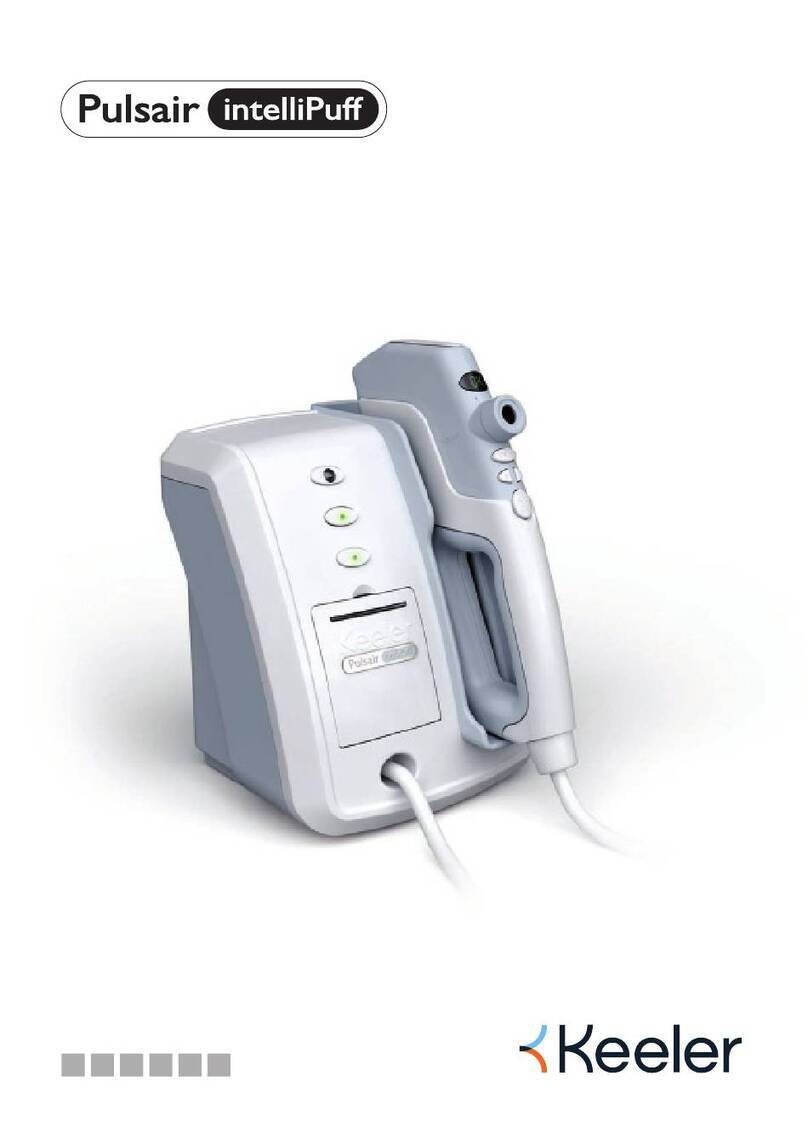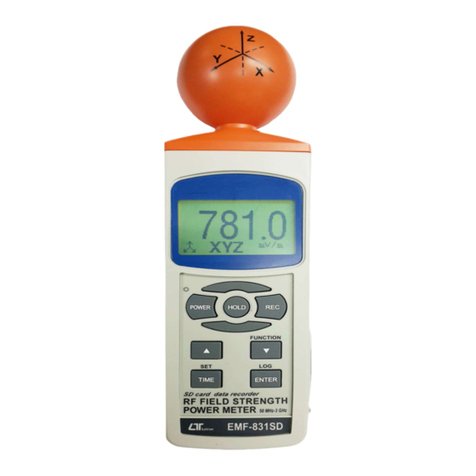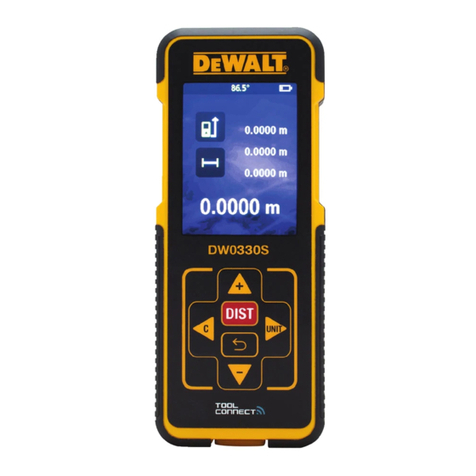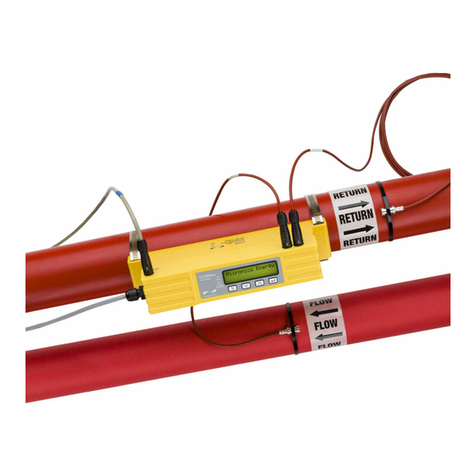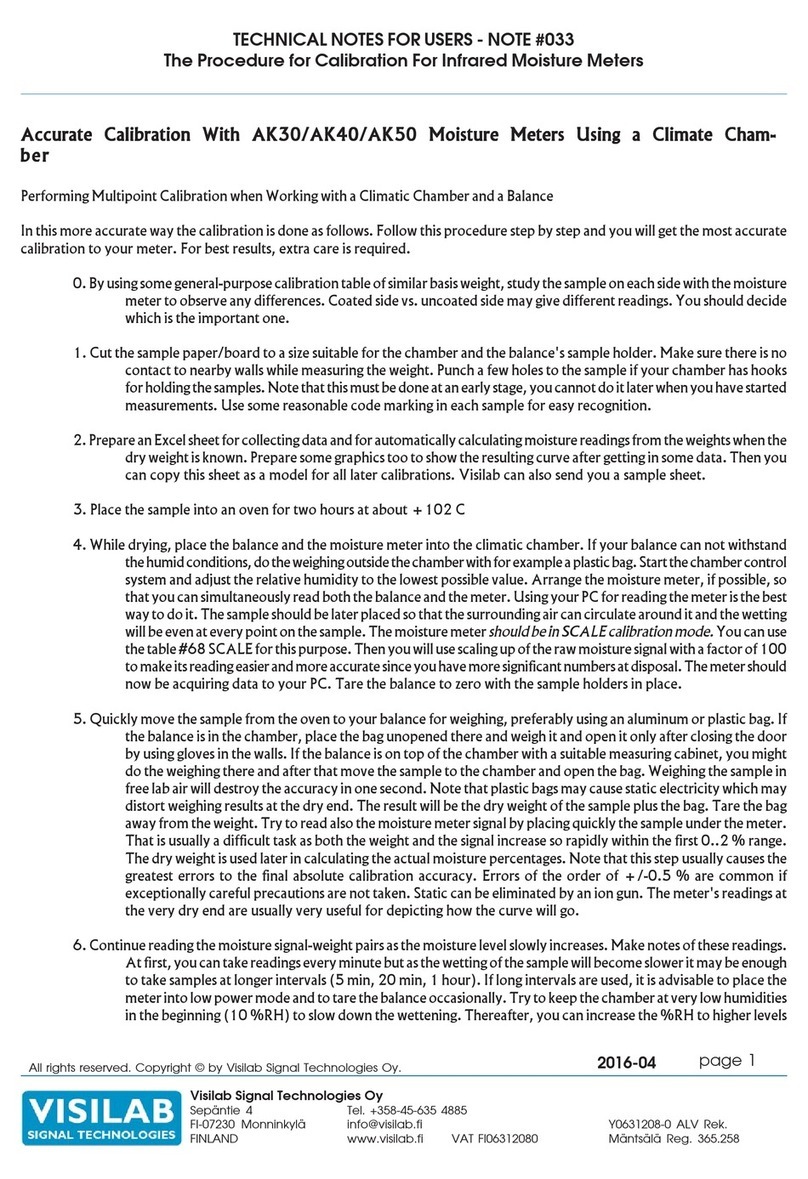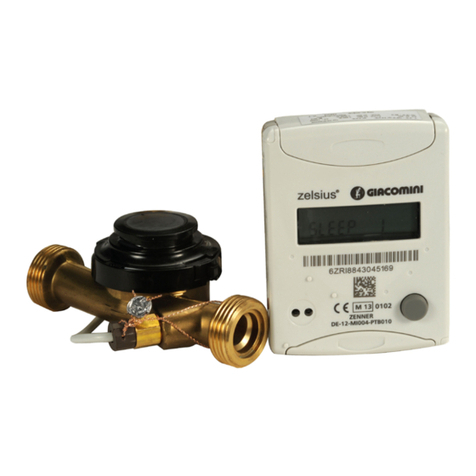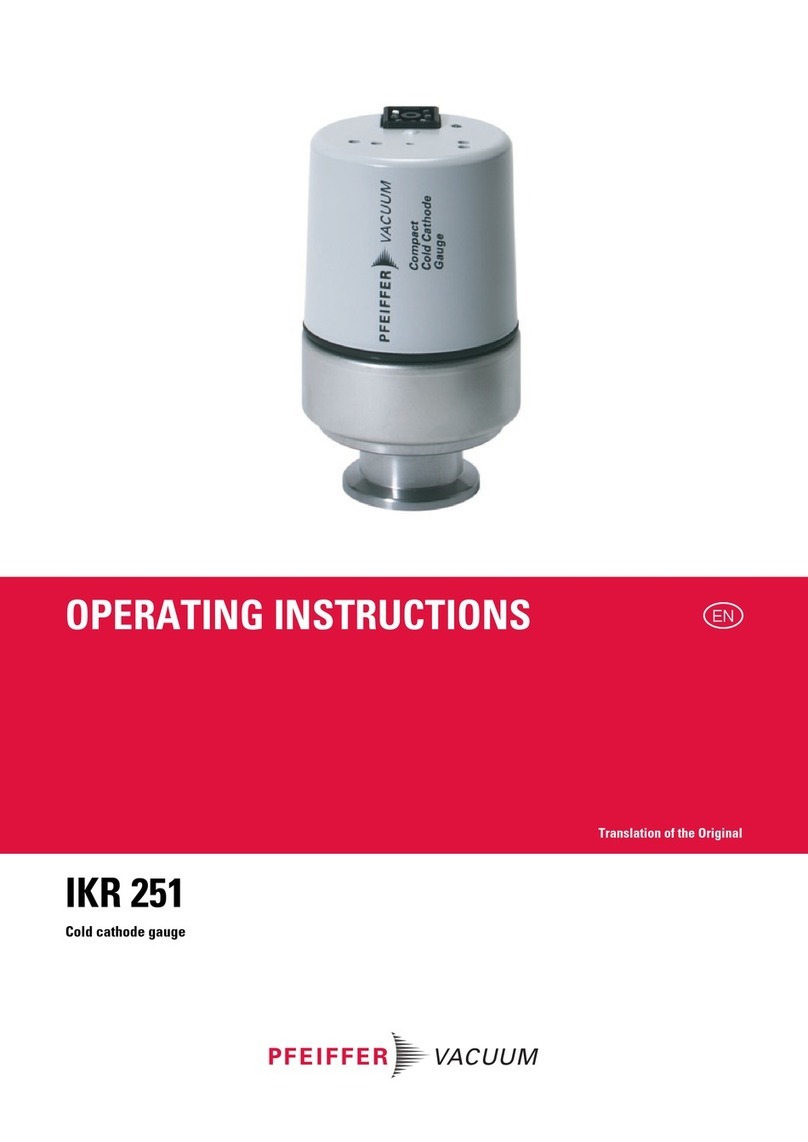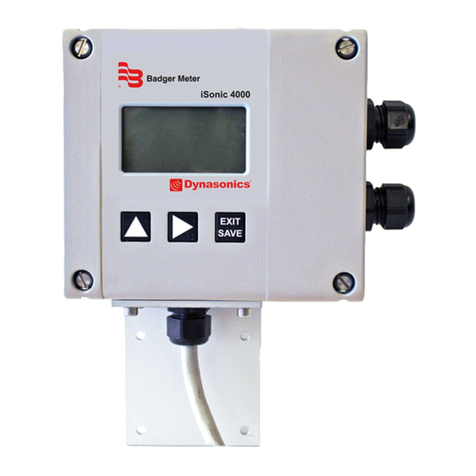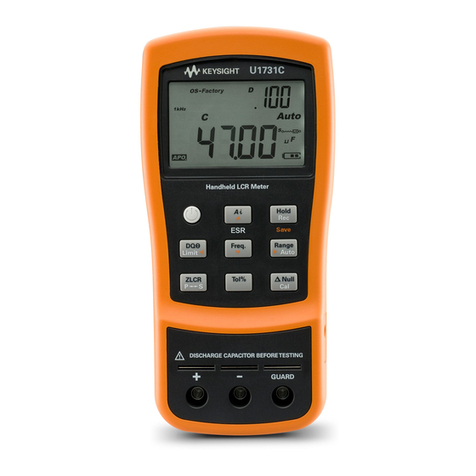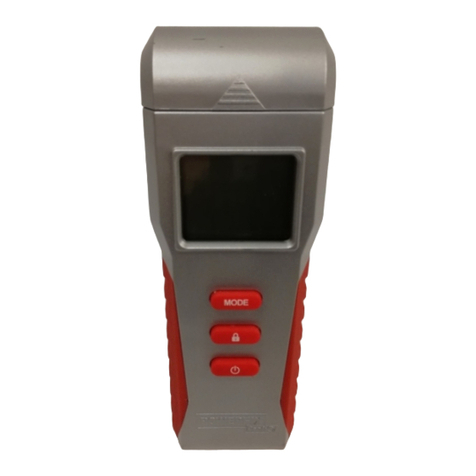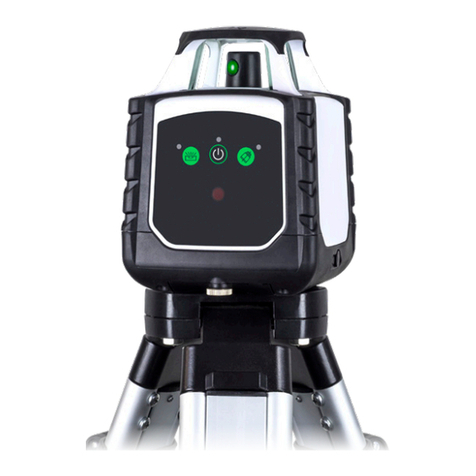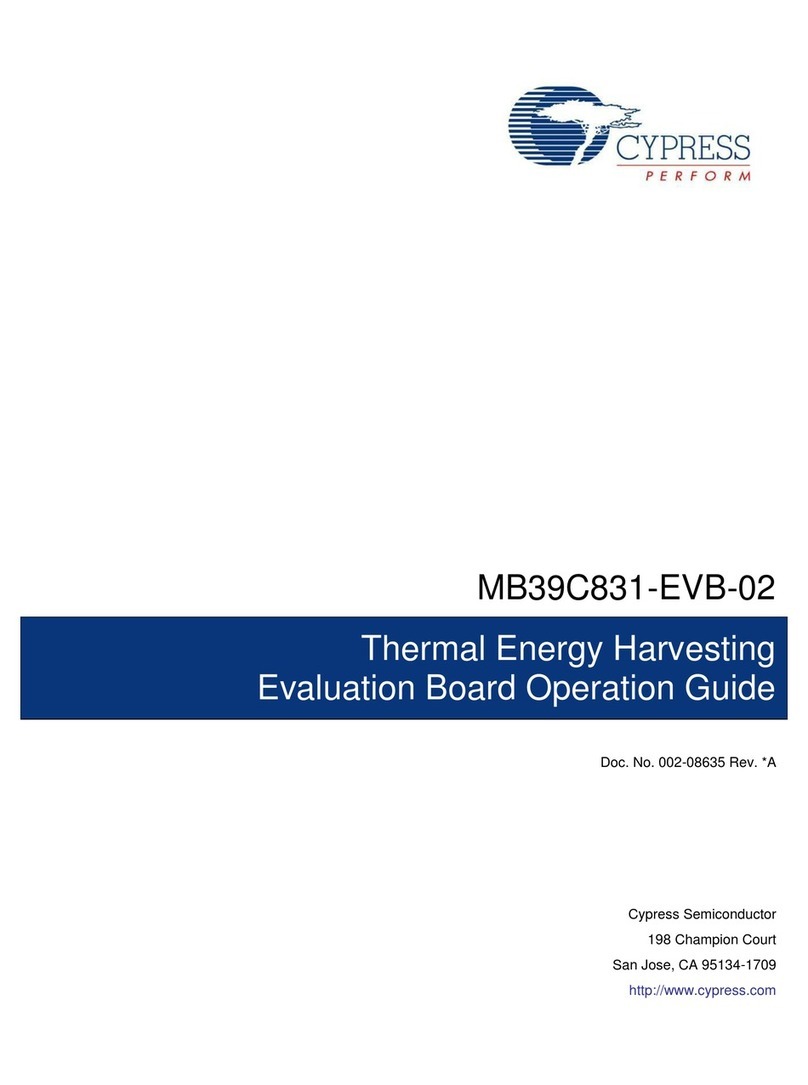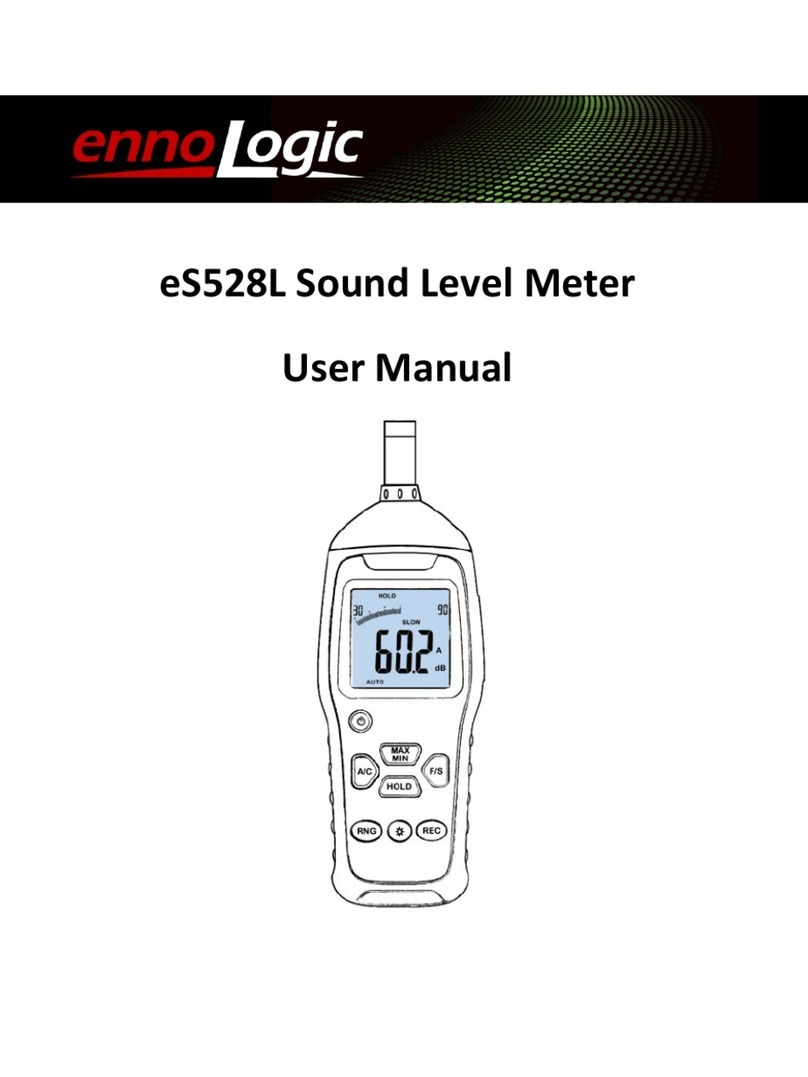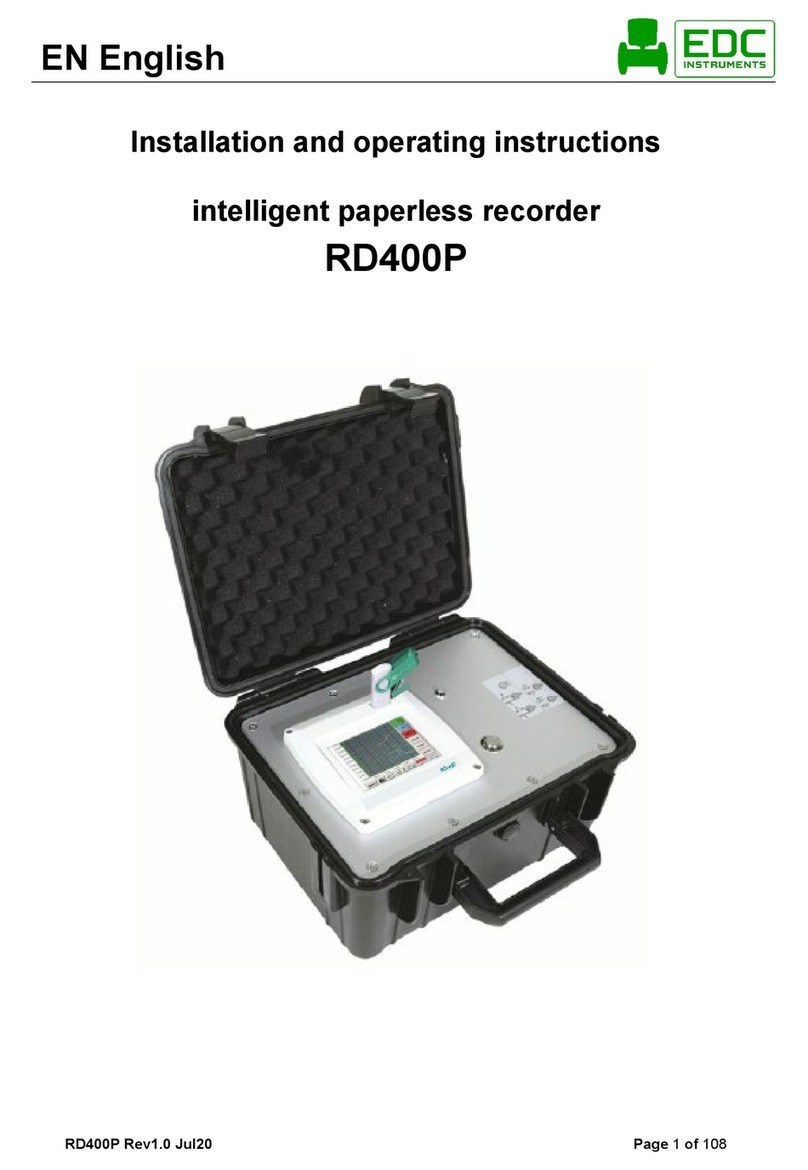Micro Direct MicroCO User manual

MicroCO Meter
Operating Manual
Federal (USA) law restricts this device to sale by or on
the order of a physician or licensed practitioner.
Micro Direct, Inc.
803 Webster Street
Lewiston, ME 04240
1-800-588-3381
www.mdspiro.com
073-04 US
Issue 1.6
February 2019

Table of Contents
Overview......................................................1
Introduction ..................................................1
Smoke Inhalation/CO Poisoning...................2
Cigarette Consumption.................................3
Package Contents........................................5
Contraindications..........................................7
Warnings and Cautions................................7
Intended Use................................................8
Operation .....................................................9
PC Connection...........................................12
Calibration..................................................12
Battery Life.................................................16
Battery Replacement..................................16
Internal Battery Expiry................................17
Sensor Expiry.............................................17
Product Lifetime .........................................18
Cleaning.....................................................18
Servicing ....................................................19
Trouble Shooting Information.....................19
Safety Designation per IEC 60601-1..........21
Electromagnetic Compatibility (EMC) to.....22
EN60601-1-2:2007.....................................22
Symbols .....................................................26
Consumables / Accessories.......................27
Specifications.............................................28
Customer Contact Information ...................29

1
Overview
The MicroCO is a hand-held battery-operated device used to
measure the concentration of carbon monoxide, CO, on the
breath and calculates the percentage of carboxyhemoglobin,
%COHb, in the blood.
It is accurate, easy to use, and has many features designed
to simplify its operation.
These include: Auto zero function
Smoking level color light indicators
Poison level alarm
Simple calibration
Serial interface to PC
Please note: It is recommended that this unit be
calibrated upon receipt.
This device should only be used by trained and qualified
personnel.
Introduction
The MicroCO is based on an electrochemical fuel cell
sensor, which works through the reaction of carbon
monoxide (CO) with an electrolyte at one electrode, and
oxygen (from ambient air) at the other. This reaction
generates an electrical current proportional to CO
concentration. Output from the sensor is monitored by a
microprocessor, which detects peak expired concentrations
of alveolar gas. This is then converted to %
carboxyhemoglobin (%COHb) using the mathematical
relationships described by Jarvis et al1, for concentrations
below 90 ppm, and by Stewart et al2for higher levels.

2
Raised levels of carboxyhemoglobin are most commonly
caused by accidental smoke inhalation/CO poisoning or
cigarette smoking. The MicroCO includes a countdown
timer as an aid to timing the breath holding period prior to
exhalation.
The results are displayed on a clear LCD display. Warning
lights are provided to give an instant indication of the
smoking level.
The countdown timer, warning light levels, and the alarm
level are user adjustable when the unit is connected to a PC
running COBRA software.
Note: the countdown timer, warning light levels, and the
alarm level used throughout this manual are the factory
settings and may have been changed.
References
1. Jarvis MJ, Belcher M, Vesey C, Hutchison DCS
Low cost carbon monoxide monitors in smoking assessment
Thorax 1986; 41: 886-887
2. Stewart RD, Stewart RS, Stamm W, Seleen RP
Rapid estimation of carboxyhemoglobin levels in fire fighters
JAMA 1976; 235, 390-392
Smoke Inhalation/CO Poisoning
CO poisoning usually occurs as a result of smoke inhalation
from fires or exposure to CO from car exhausts or faulty
heating systems. CO binds with hemoglobin to form
carboxyhemoglobin (COHb) which reduces the capacity of
the blood to carry oxygen. Acute poisoning may cause
symptoms ranging from headache and breathlessness (at
COHb levels of 10% to 30%) through confusion to coma and

3
death (COHb usually greater than 60%). A particularly
insidious feature of CO poisoning is the development of
neurological problems such as movement disorders (often
resembling Parkinson’s disease), memory loss and altered
personality. Such problems may develop weeks after
apparent recovery from acute poisoning.
Chronic exposure to relatively low levels of CO may result in
a variety of symptoms including headache, fatigue, poor
concentration, dizziness, palpitations, chest pain, visual
disturbance, nausea, diarrhea and abdominal pain.
Chronic CO poisoning as a cause of such symptoms is often
missed.
The MicroCO allows immediate assessment of patients at
risk of CO poisoning who can then be rapidly referred for
expert assessment. Prompt treatment with oxygen (in a
hyperbaric chamber, if severe) is often life saving.
Screening for CO exposure may also reveal the cause of
non-specific symptoms relating to low level CO exposure
(usually as the result of faulty gas appliances).
References
Meredith T, Vale A, Carbon monoxide poisoning
British Medical Journal, 1988; 296, 77-78
Cigarette Consumption
The MicroCO provides a simple screening test for cigarette
consumption for use in all smoking cessation programs.
Measurement of carboxyhemoglobin has been well validated
as an indirect measure of cigarette consumption and is
widely used in smoking cessation programs.

4
Typical values for carboxyhemoglobin and expired CO in
smokers and poisoning victims, together with the alarm light
status, are given below:
CO (ppm)
%COHb
Cigarette
consumption
Indicator
0 –6
0 –1
Nonsmoker
Green
7 –10
1.1 –1.6
Light smoker
Amber
11 –72
1.8 –12
Heavy smoker
Red
>72
>12
Suspected
poisoning
Red +
alarm
Please note that some urban areas may have high
environmental levels of CO. This can cause a rise in
exhaled CO of a few ppm above that which is normally
present on the breath. In these cases it is possible for a
non-smoker to appear at the bottom of the ‘light smoker’
range (7 –10 ppm).
References
The relationship between alveolar and blood carbon monoxide
concentrations during breath holding
Jones RH, Ellicott MF, Cadigan JB, Gaensler EA
Journal of Laboratory and Clinical Medicine 1958; 51, 553 –564
Carbon monoxide in breath in relation to smoking and
carboxyhemoglobin levels
Wald NJ, Idle M, Boreham J, Baily A
Thorax 1981; 36, 366-369
Definition of a reliable threshold value for detecting current
smokers by CO measurement
Marino Luigi; Latini Roberto; Barbano Gina; Bazzerla Giorgio;
De Luca Anita, Nardini Stefano Respiratory and TB Unit-General
Hospital- Via forlanini, 71-I-31029-Vittorio Veneto (TV-ITALY).

5
Correlation between exhaled CO measurements and
carboxyhemoglobin percentage in smokers
Marino Luigi; Latini Roberto; Barbano Gina; Bazzerla; Zanette Antonia;
Nardini Stefano Respiratory and TB Unit- General Hospital- Via Forlanini,
71- I-31029-Vittorio Veneto (TV- ITALY).
Package Contents
The MicroCO is supplied with a carrying case containing the
following items:
1. MicroCO meter (Cat No. MC02)
2. 22 mm mouthpiece adapter (Cat No. PSA1800)
3. 22 mm reducing connector for calibration (Cat No.
MEC1007)
4. 9-Volt Battery
5. 4 Disposable mouthpieces (Bag 100 Cat No. 3301)
6. Calibration tool (Cat No. MEC1184)

6
micro
6
5
4
%
C
O
H
b
CO-PPM
OFF
1
3
2

7
Contraindications
There are no known contraindications for using the MicroCO.
Warnings and Cautions
The following terms are used as follows in this manual
Caution: Possibility of injury or serious damage
Warning: Conditions or practices that could result in
personal injury
Please Note: Important information for avoiding damage to
the instrument or facilitating operation of the instrument.
Note: The device should be used by trained and qualified
personnel.
CAUTION: Read the manual before use.
CAUTION: Do not attempt to charge the batteries, connect
improperly or dispose of in a fire as there is a possibility of
leakage or explosion. Follow manufacturer’s recommendations
for proper disposal.
WARNING: The instrument is not suitable for use in the
presence of explosive or flammable gases, flammable
anesthetic mixtures or in oxygen rich environments.

8
CAUTION: Mouthpieces are single patient use. If used on more
than one patient, there is a risk of cross-infection. Repeat use
may increase air resistance and lead to an incorrect
measurement.
PLEASE NOTE: The product and battery you have
purchased should not be disposed of as unsorted
waste. Please utilize your local recycling facility for
the disposal of this product.
PLEASE NOTE: Degree of protection against Ingress of Water
is IPX0.
CAUTION: When you connect the MicroCO to other
equipment, always make sure the whole combination complies
with the international safety standard IEC 60601-1 for medical
electrical systems. During measurements, connect the
MicroCO only to computers that comply with IEC 60601-1 /
ANSI/AAMI ES60601-1:2005 / CAN/CSA-C22.2 No. 60601-1:14
Intended Use
The MicroCO is intended to measure the amount of Carbon
Monoxide (CO) that can be expired from the breath. The
expired CO is measured in parts per million (ppm) and is
used to calculate the percentage of carboxyhemoglobin
(%COHb) in the blood.
The MicroCO is used in smoking cessation clinics, physician
offices, emergency departments and by the fire-fighting
services. In smoking cessation clinics, it is used for
instructional purposes to check on the client’s progress and
compliance. General practitioners, emergency room
personnel and the fire-fighting services can use the

9
instrument to quickly assess the level of suspected CO
poisoning.
The MicroCO is designed for use by clinicians and health
care professionals.
Operation
For accurate results, the CO meter should be used at room
temperature. If the instrument has been stored in cool or hot
conditions, allow time to reach room temperature prior to
use.
Install the 9-volt battery by sliding open the battery cover,
clipping the battery in place and replacing the cover. Insert a
SafeBreath mouthpiece (order #FM200); or if not using a
SafeBreath mouthpiece, insert the plastic mouthpiece
adapter followed by a cardboard mouthpiece. Turn the unit
on by selecting the upper or middle position on the central
slide switch and the display will show software version
number (ex. 3.03).
The version number will appear momentarily while correction
for ambient levels is executed. During this time the unit must
not be exposed to concentrations of CO. The display will
change to:
Upon seeing the number 20, instruct the subject to inspire
fully and hold their breath for 20 seconds. The display will

10
count down from 20 to 0 as an aid to timing the breath
holding period. The green indicator will illuminate and the
display will change to:
At this time, the subject should seal their lips around the
mouthpiece and exhale slowly and fully. The 20 second
breath holding period is recommended to allow time for
equilibration of alveolar gas.
If, however, the subject is unable to hold their breath for this
period, the unit may still be used before 20 seconds have
elapsed.
The unit must not be used, however, for one (1) second after
the unit is first switched on i.e. before the countdown
commences. Expired alveolar gas is then entrapped
between sensor and mouthpiece valve. The display reading
will rise to a plateau over the course of a several seconds.
The final value will be held until the unit is turned off and
represents parts per million CO or %COHb depending on the
slide switch position.
The lights will come on according to the table on page 4 and
the red light will flash and an alarm will sound if the
measurement rises above 72 ppm (12%COHb).
If this occurs, then the possibility of CO poisoning should be
investigated as this level of CO is unlikely to be produced by
cigarette smoking.
BLO
W

11
Important note: Before repeating a measurement, the
unit must be turned off, and the mouthpiece and adapter
removed for at least one (1) minute. This is to allow re-
equilibration with ambient air and to dry the surface of
the sensor. Visually inspect that all moisture has
evaporated from the surface of the sensor before reuse.
If the unit is switched on again too quickly after use, there
may be a response to residual expired carbon monoxide
from the previous test.
In this case the display will show:
If this is displayed, turn the unit off, remove the mouthpiece
adapter, and expose to ambient air for two (2) minutes
before repeating the test.
Note: If this warning appears again after following the above
procedure, turn off and leave the sensor exposed to ambient
air for a further three (3) minutes. If the same message
appears again then this indicates possible contamination of
the sensor with a solvent.
In this case remove all sources of solvent from the vicinity of
the sensor and expose to ambient air for 24 hours before
switching on again.

12
PC Connection
The MicroCO may be connected to the serial port of a PC
running COBRA (CO BReath Analysis) software.
This software allows the measurements to be read by a PC
and automatically entered onto a pre-defined report for
subsequent printing and filing. It also allows the CO level
indicators and the breath holding countdown timer to be
configured to individual requirements.
Note: The MicroCO should only be connected to a
computer that is manufactured in accordance with
EN 60601-1.
Note: Keep the PC out of reach of the patient at all times.
Calibration
Calibration will remain stable to within 2% over one (1)
month and typically to within 10% over six (6) months. Micro
Direct supplies calibration gas (20ppm CO in air) and
recommends that the unit is recalibrated every six (6)
months. See page 27 for calibration accessories.
The gas is supplied in convenient, disposable cans
containing 17 liters of gas (Cat No. MC10).
To carry out the calibration, locate the calibration button on
the right-hand side of the instrument as shown on the next
page.

13
20ppm carbonmonoxide inair
Flow Indicator Control Valve
ReducingConnector forCalibration
PlasticTubing
Screw the control valve firmly onto the cylinder and connect
the gas supply as shown below:
Push the slide switch to the CO - PPM position and wait for
the unit to display zero.
Serial
Port
Calibration
Button

14
The plastic tubing supplied with the gas should be pushed
firmly over the reducing connector.
Turn the control knob fully counterclockwise until knob will
not turn any further. Apply gas for 25 seconds. If the meter
does not read 20 ppm, use the calibration tool to push the
calibration button.
The unit will beep three (3) times, store new calibration value
and the display will show:
The gas supply should then be turned off.
If the signal from the CO sensor is too low a new calibration
value will not be stored and the display will show:
The most likely cause for this is an expired cell but may also
be caused by depressing the calibration switch with no gas
applied. Ensure that the concentration of calibration gas is
correct (20ppm) that the connections to the gas cylinder are
secure, that the gas cylinder is not empty, and then repeat
the calibration procedure.
If the above message is repeated, the CO meter must be
returned to Micro Direct, Inc. for sensor replacement.

15
Sensor life is greater than 2 years and depends upon both
the amount of exposure to CO and other gases, particularly
solvents such as alcohol and cleaning fluids.
If the signal from the CO sensor is too high, a new
calibration value will not be stored and the following will be
displayed when calibration is attempted:
The most likely cause for this is using an incorrect
concentration of calibration gas. Ensure that the
concentration of calibration gas is correct (20 ppm) that the
connections to the gas cylinder are secure and then repeat
the calibration procedure.
In order to stop any gas leak from the can after calibration,
ensure that the control knob is tightened firmly.
Important Notes:
•Only certified calibration gas from a reputable source
should be used.
•Ensure no CO is present on the sensor for three (3)
minutes before starting the calibration procedure.
•Ensure the instrument and gas cylinder has stabilized
at room temperature before calibrating.
•In order to stop any gas leaks from the can after
calibration, ensure the control knob is tightened firmly.

16
Battery Life
Battery life is approximately 30 hours of continuous use.
When the battery has approximately one (1) hour of useful
life left, the alarm will sound momentarily after the unit is first
switched on and the following message will be displayed:
When the battery has completely expired the above will be
displayed continuously and the battery must be replaced.
Battery Replacement
Locate the sliding cover situated on the rear of the unit,
toward the bottom of the device.
Place your thumb over the round thumb indent, press gently
and slide the cover to the right to remove it from the unit.
Lift the old battery out and holding the battery terminal by the
plastic body, pull it off the old battery.
Plug the new battery into the battery terminal taking care that
the correct polarity is observed.
Push the battery back into the battery holder and replace the
battery cover onto the guides. Slide the battery cover to the
left until it is fully home.
Note: Please remove the battery if the meter is likely to be
unused for some time.

17
CAUTION: Do not open the battery cover when the device
is turn on.
CAUTION: The operator should not touch the contacts of
the battery and the patient at the same time.
Please Note: Dispose of the waste battery in accordance
with your waste management regulations.
Internal Battery Expiry
The MicroCO has an internal battery with a life of
approximately ten years. This battery supplies the sensor
signal conditioning circuit continuously to ensure instant start
up.
When the battery has expired, the following warning
message will be displayed:
and the alarm will sound when the unit is first turned on.
When this occurs, the battery must be replaced with a 3.6V
1/2 AA lithium battery.
Sensor Expiry
Sensor life is greater than 2 years and depends upon both
the amount of exposure to CO and other gases and solvents
such as alcohol and cleaning fluids.

18
When the sensor has expired, it will become impossible to
obtain a correct calibration. When this occurs, the MicroCO
must be returned to Micro Direct for sensor replacement.
Product Lifetime
The MicroCO meter is designed for a product lifetime of
seven (7) years.
Cleaning
Disinfection of contaminated parts is only effective after
having them carefully pre-cleaned. Micro Direct recommends
using any cold germicidal disinfectant that does NOT contain
chlorine or alcohol. Please follow the given manufacturer’s
instructions.
CAUTION: Switch off the device and always unplug your
MicroCO meter from the computer before cleaning.
If using the cardboard mouthpieces with the mouthpiece
adapter instead of the SafeBreath filtered mouthpiece
(#FM200), it is recommended that the plastic Mouthpiece
Adapter (#PSA1800) under the prerequisite that the patient
was instructed only to exhale, the mouthpiece adapter and
the CO meter surface have to be cleaned.
The mouthpiece adapter may be cleaned and disinfected by
immersion in any cold disinfecting solution that does NOT
contain chlorine or alcohol. We recommend wiping exposed
surfaces of the meter with the Protex disinfectant wipe (order
#48-70). It is recommended that this procedure is performed
after each use and all used cardboard mouthpieces be
discarded.
Table of contents
Other Micro Direct Measuring Instrument manuals
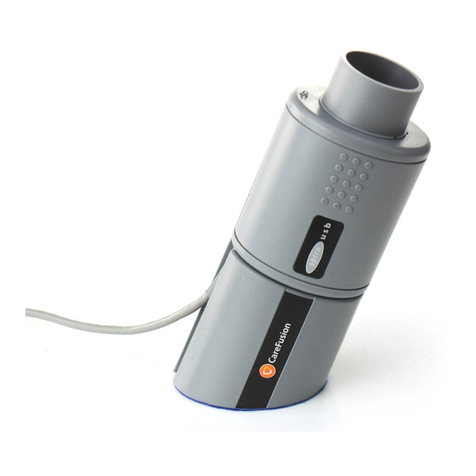
Micro Direct
Micro Direct SpiroUSB User manual
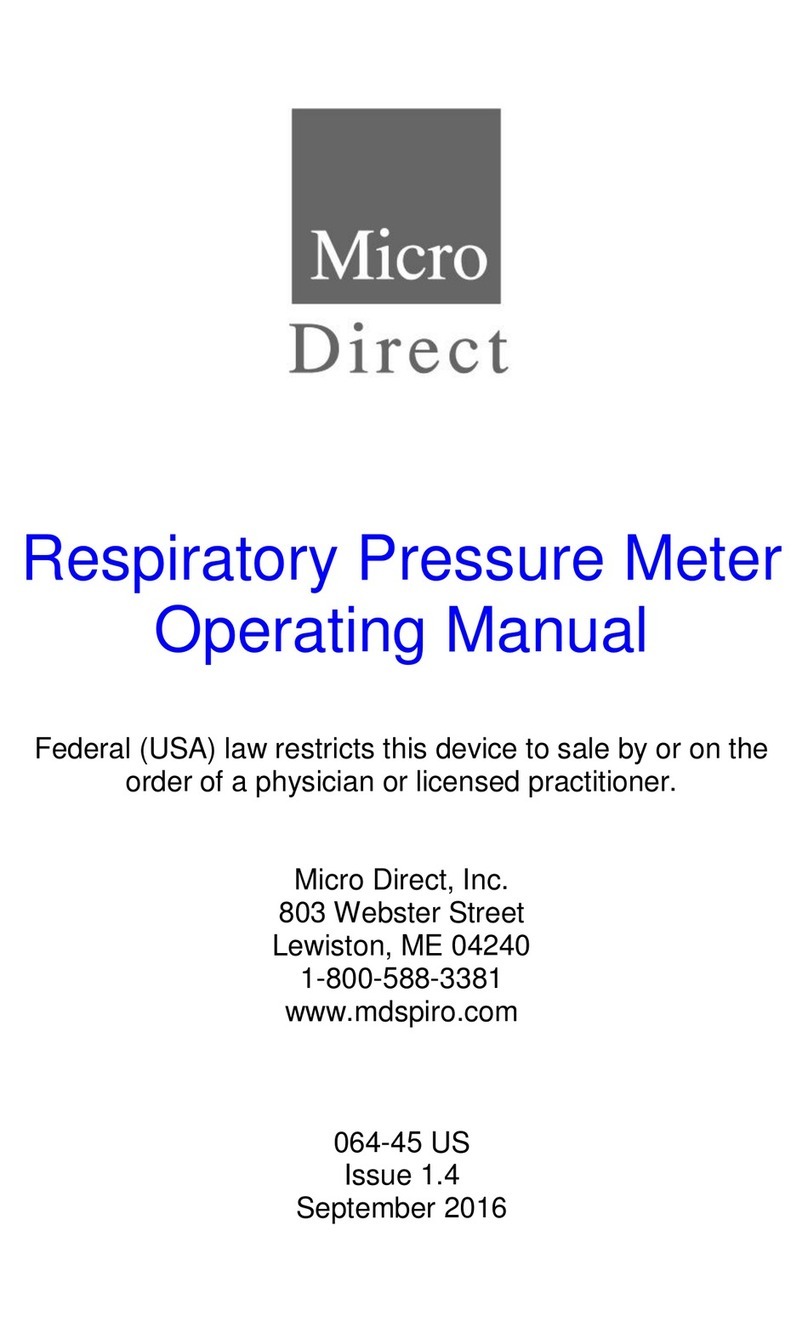
Micro Direct
Micro Direct MicroRPM User manual
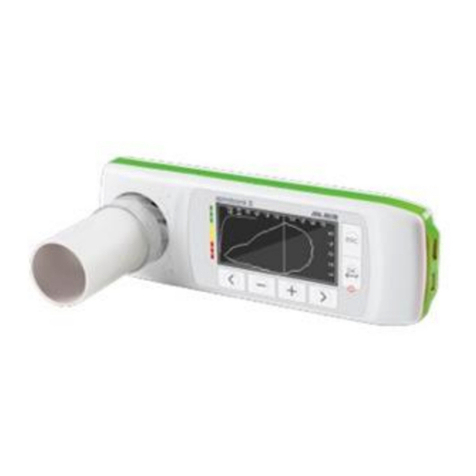
Micro Direct
Micro Direct MD Spiro SpiroBank II MD10 User manual

Micro Direct
Micro Direct MD SPIRO Micro MD6300 User manual

Micro Direct
Micro Direct MD Spiro Pneumotrac User manual

Micro Direct
Micro Direct PulmoLife User manual
